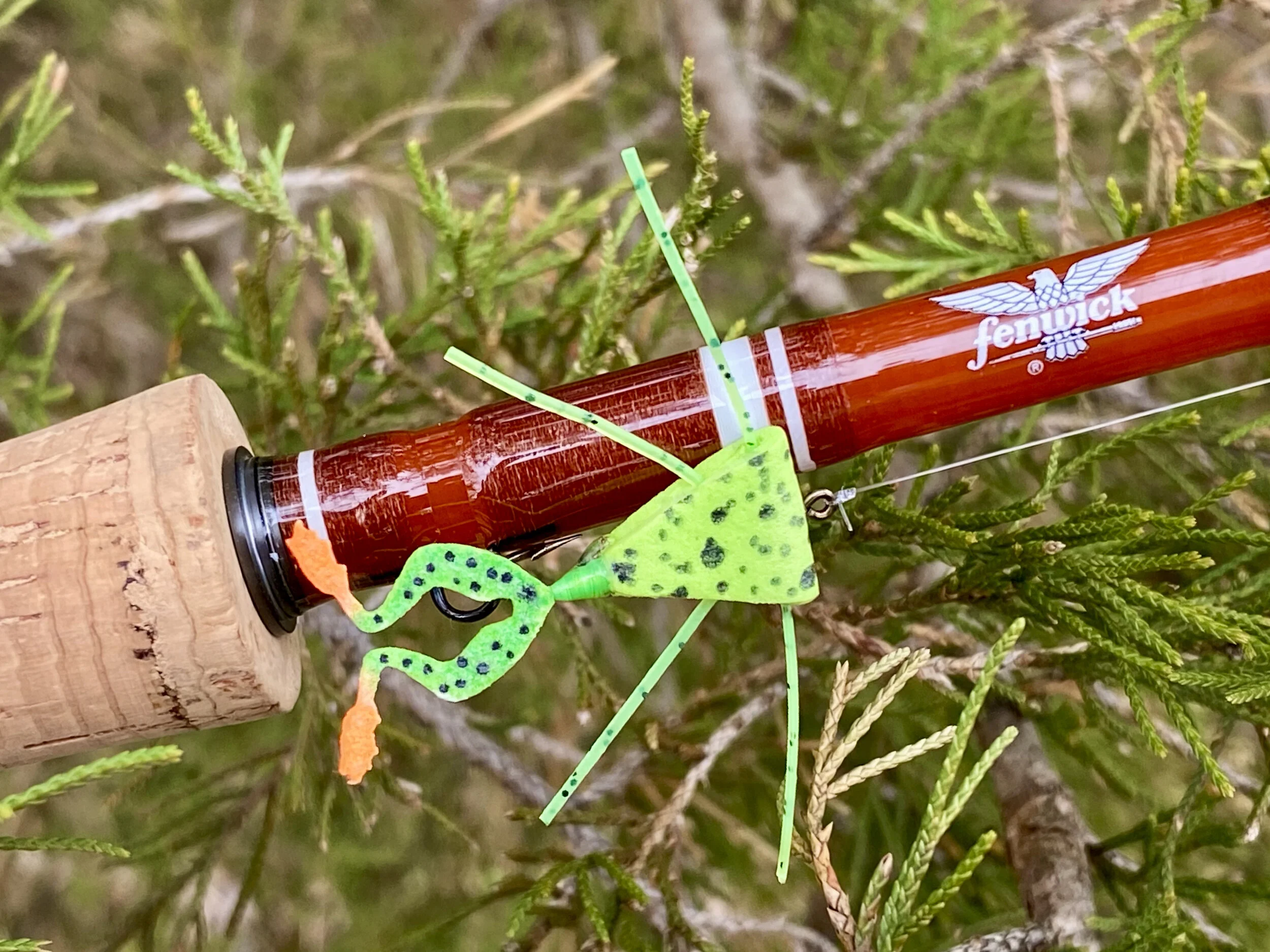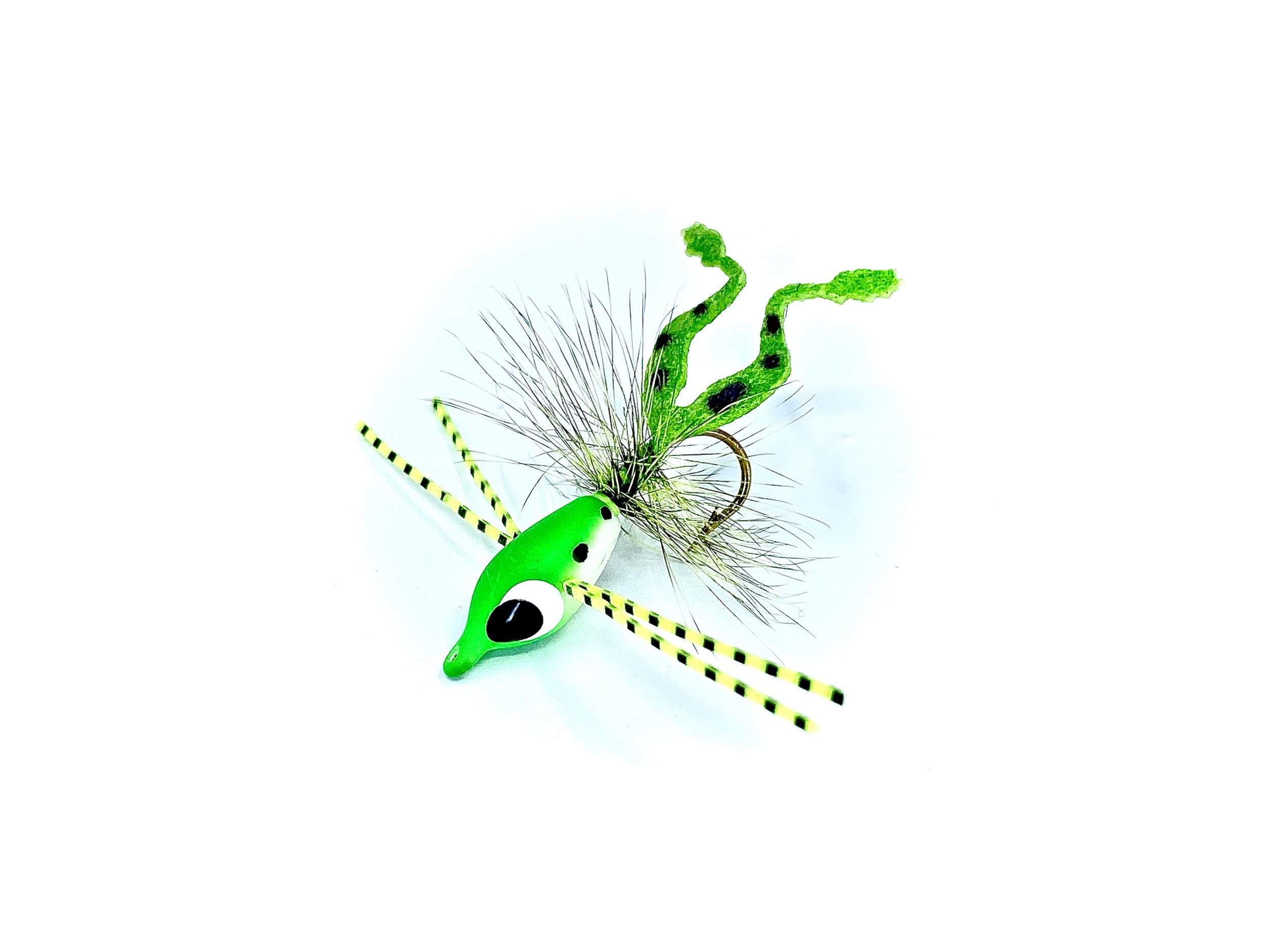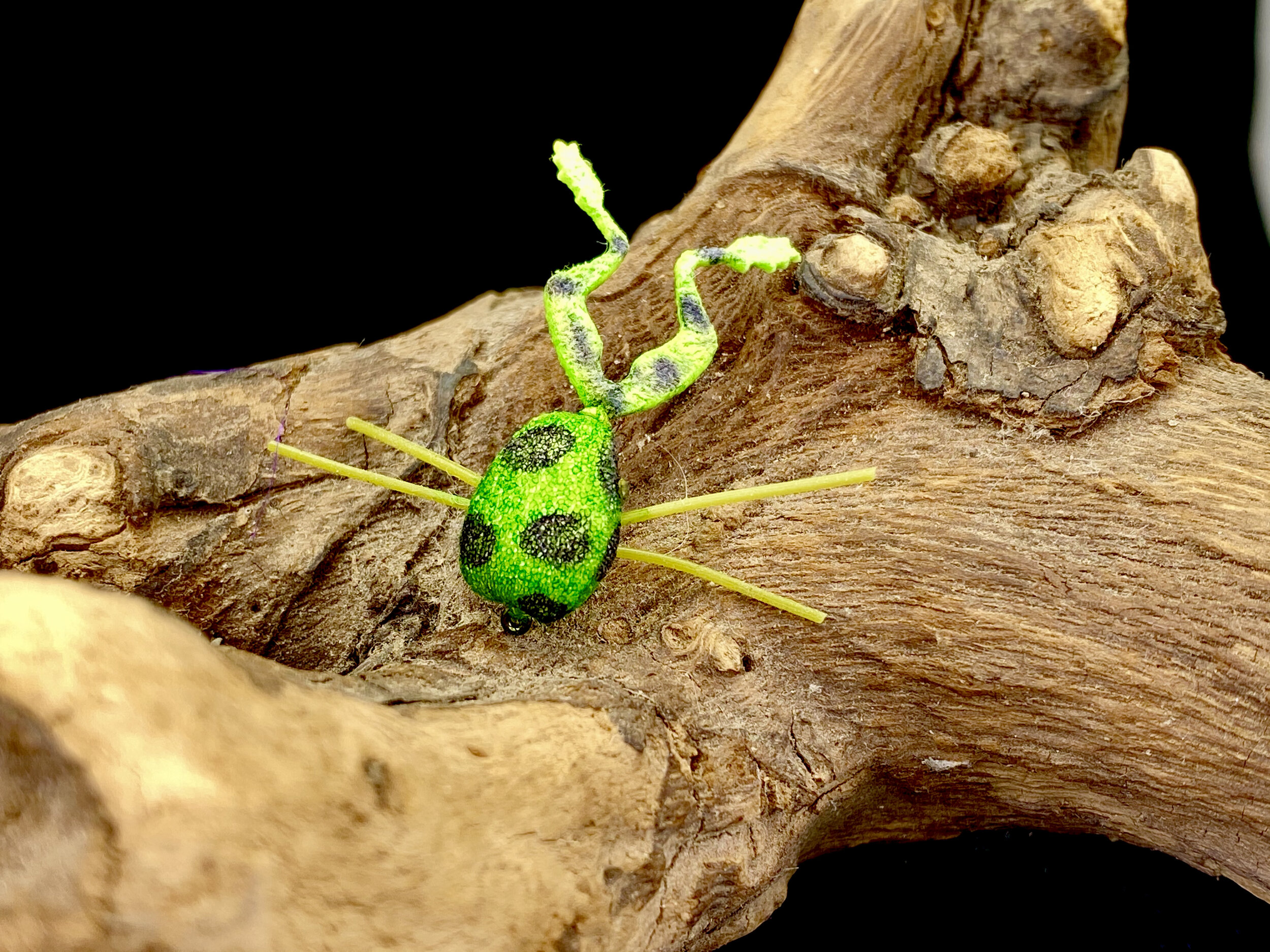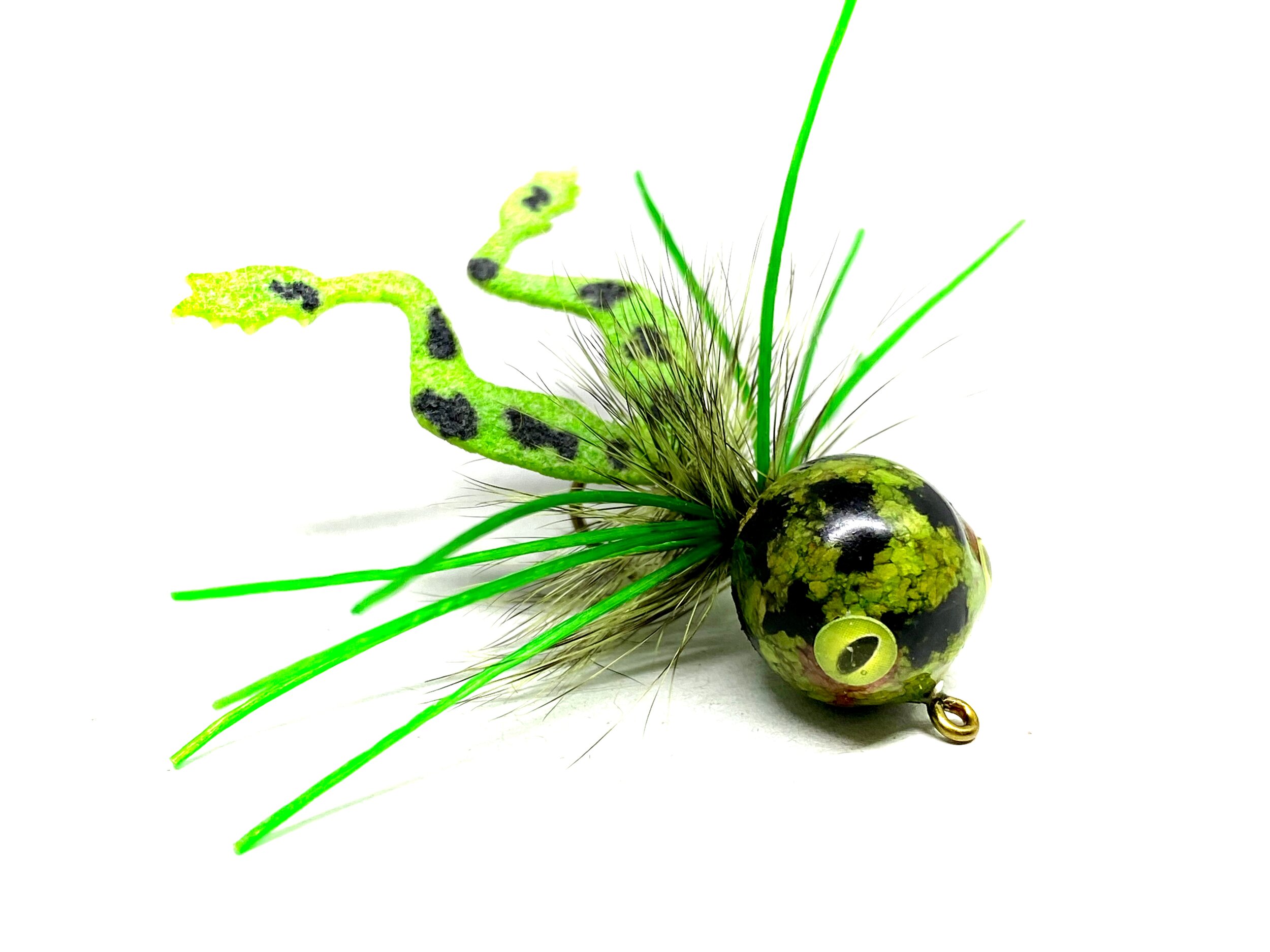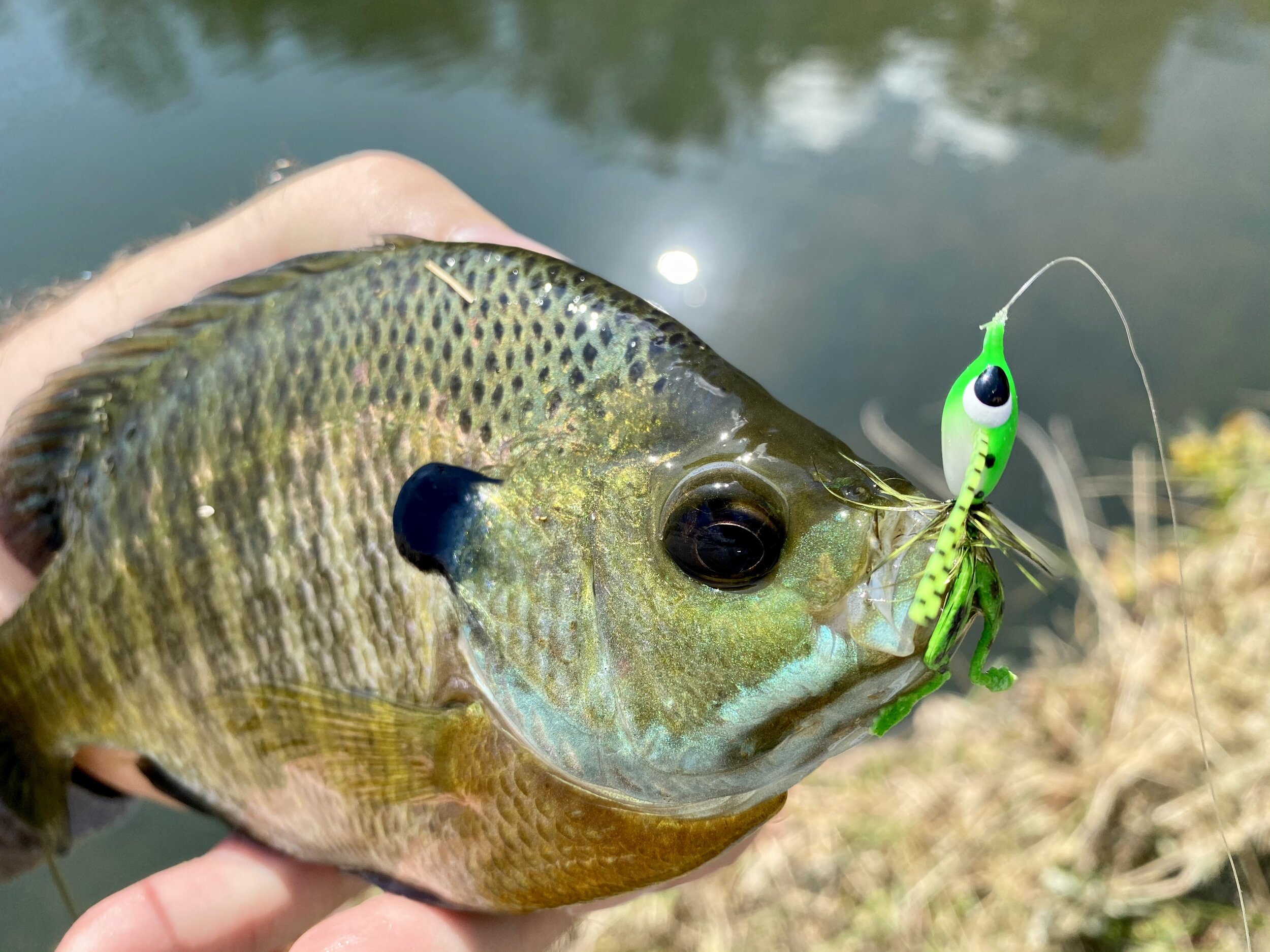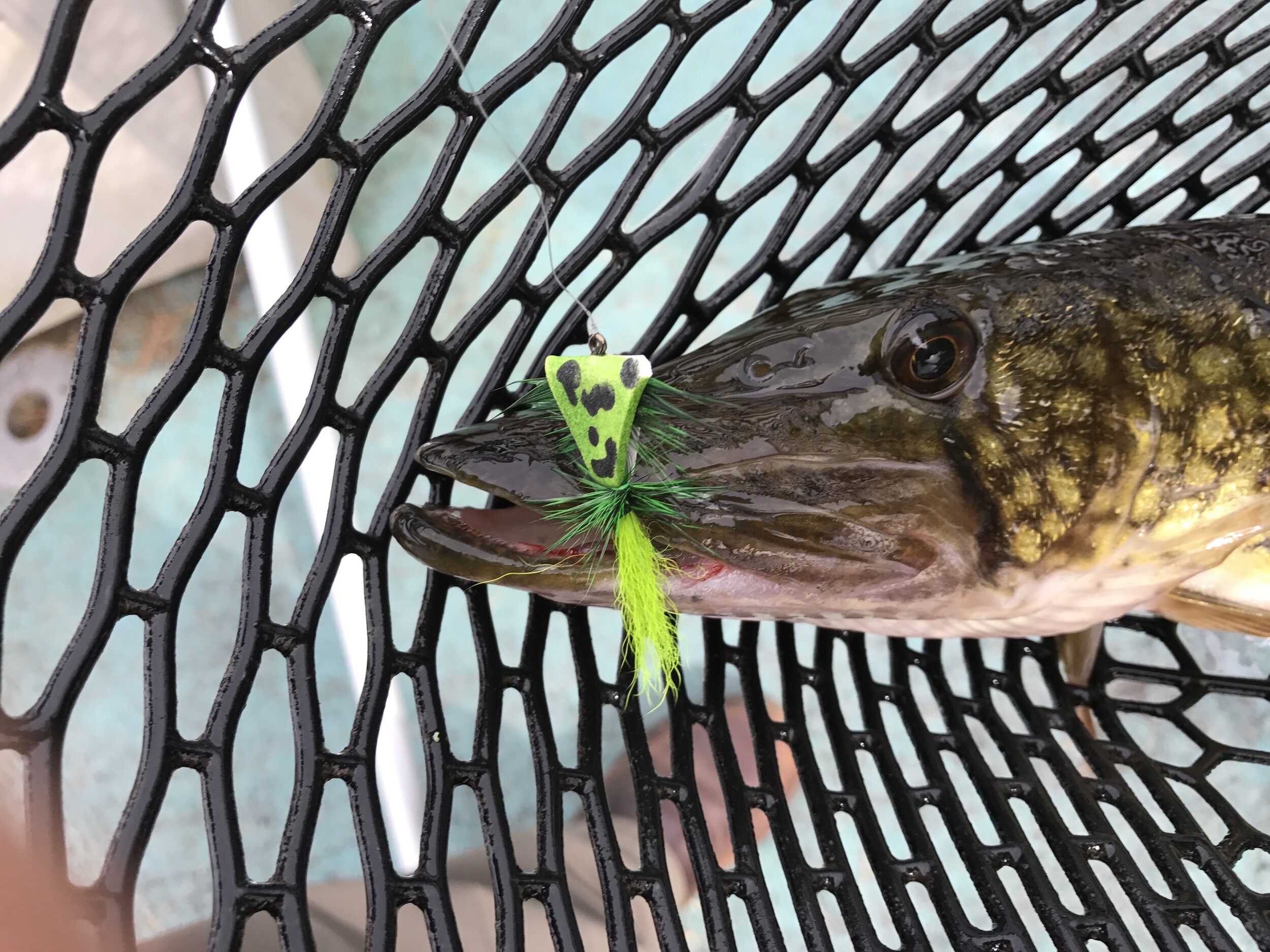If you are a regular reader of this blog, you are probably familiar with my most well-known fly, the Triangle Bug. I developed Triangle Bug many years ago to solve a problem which plaques fly fishers who target panfish. That being the fact that panfish, like bluegills, have small mouths but are notorious for swallowing flies. A fish with a small mouth that is deeply hooked is a recipe for disaster if you plan on releasing the fish. The unique shape of the triangle bug prevents small-mouthed panfish from swallowing the fly. The fly's business end is narrow, allowing the fly to be taken off the surface easily, but the pattern's wide leading edge keeps it from being swallowed.
The original Triangle Bug
This unique-looking fly has gone through a few changes over the years before finally settling in on the simple pattern I tie today. Three simple ingredients are all it uses - foam, calf tail, and rubber legs.
Why change a good thing? Why not! Over the last few years, I have been tying and fishing a few micro-sized frog patterns for panfish. Flies like the Micro frog tied using slider bodies and the foam Wee Frog have been solid producers for me. The component that turns these topwater bugs into mini frogs is Pat Cohen's Creature Frog Legs.
Pat Cohen is an incredibly talented artist, fly designer, and tier and a friend I cross paths with several times a year at area fly tying shows where we appear as fly tiers and presenters. The frog legs are just one of a long line of Creature products that include everything from nymph bodies (another favorite), crawfish bodies, twist and flutter tails, various components for baitfish, the list goes on and on.
Cohen's Creatures are made from laser-cut ultra suede, an incredibly durable material that can be colored any way you want. Before tying them onto the fly, I color them up. You can use permanent markers, but some "permanent" markers are less permanent than others, and the colors may fade or washout after repeated dunkings. The man himself recommends fabric paints and markers for coloring the ultra suede, and that is what I usually use if they are on hand.
Tying this version of the fly is even easier than the original. Simply swap out the calf tail for the frog legs. The frog legs have a little tab on them for easy attachment to the hook.
The Micro Frog tied using our panfish slider bodies is a summertime favorite.
Pat's frog legs have found their way into many of my warmwater flies for bass and other larger predators, but I also use them in pint-sized versions for panfish. Available in 7 sizes, from Micro to Extra-large, you can use them to tie flies for everything from panfish to musky.
While not a large bluegill, a fish this size has no problem eating the Froggy Triangle Bug.
I use the micro-sized legs for my size 8 Triangle Bug, but the mini size will work as well and will give you a slightly larger profile if that's what you are after. I will warn you in advance that these frog legs may discourage hookups from smaller fish. One of the original Triangle bug's key features was the narrow back end, which allows a small-mouthed fish to pick it off easily. The legs' larger profile changes that a little, but the fly has no difficulty catching larger panfish.
Before using these frog legs on my panfish patterns, I experimented with larger Triangle Bug versions tied for bass. They worked so well I thought I would try them on the original panfish version, and after several seasons I can report they are a winner. Does it make the fly any more effective? Probably not, but I do believe it attracts the attention of bigger fish. I have caught many bass on Triangle Bugs, and the bass caught on the frog leg version come a little more frequently.
A large size 2 Gerbubble style Triangle bug tied for bass and pickerel.
Cohen's Frog Legs makes tying realistic frog patterns easy. I am not saying the Triangle Bug 2.0 is realistic (it is impressionistic at best), but it is easy! Give it a try.
Pattern Recipe:
Hook: Daiichi 2460 or Allen S402BL size 8
Thread: Semperfli Classic Waxed 6/0 in the color of choice
Tail: Cohen’s Creature Frog Legs Micro or Mini (Micro size shown)
Body: 2mm Foam cut with a Triangle Bug Foam Cutter (or shaped by hand)
The Triangle Bug Foam Cutter makes cutting out bodies for this fly a breeze!
A specialized cutter for stamping out perfectly proportioned bodies for the Triangle bug is available.
